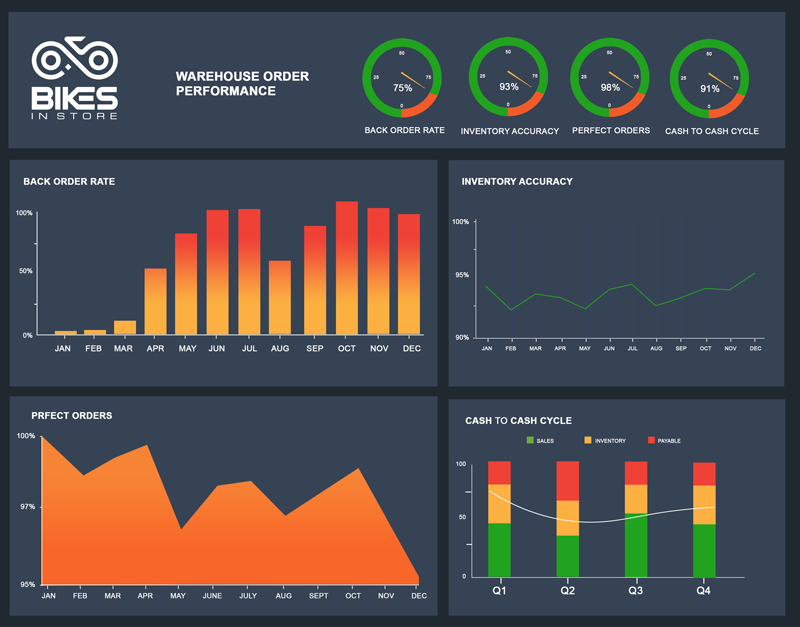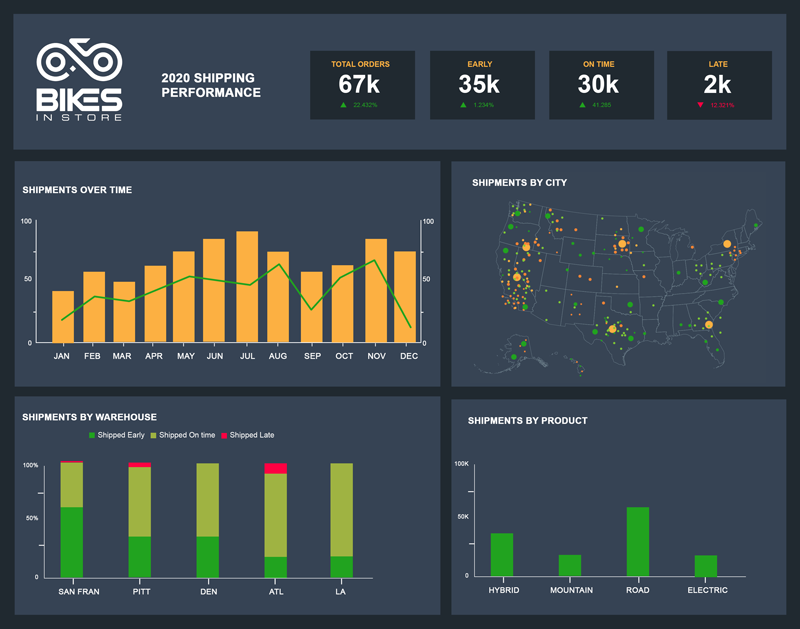by Laurie Smith on November 10, 2021
We saw unprecedented disruption to supply chains in 2020 that caused problems for companies and consumers. The Federal Reserve reports continued supply chain and logistics disruptions in 2021 are emerging at the same time demand is increasing.
For companies struggling to manage supply chains, it’s a significant issue. Supply chains represent as much as half of the value of a company’s products or services.
Failing to manage the supply chain efficiently, leads to ongoing problems, including:
- Less resilient to market changes
- Less efficient
- Decreased inventory
- Inability to meet demand
- Decreased financial performance
As many as 94% of Fortune 1000 companies reported supply chain disruptions during the past year. Three-quarters of organizations said it had a significant negative impact on their business.
One thing we learned during the pandemic was the need to actively manage the supply chain to source products to keep cash flowing. As Accenture’s recent report on supply chain disruption stated, “strong data and analytics capabilities are crucial in understanding complexity, anticipating potential disruption, and quickly developing a response.”
Supply Chain Disruptions
We saw unprecedented disruption to supply chains in 2020 that caused problems for companies and consumers. The Federal Reserve reports continued supply chain and logistics disruptions in 2021 are emerging at the same time demand is increasing.
For companies struggling to manage supply chains, it’s a significant issue. Supply chains represent as much as half of the value of a company’s products or services.
Failing to manage the supply chain efficiently, leads to ongoing problems, including:
- Less resilient to market changes
- Less efficient
- Decreased inventory
- Inability to meet demand
- Decreased financial performance
As many as 94% of Fortune 1000 companies reported supply chain disruptions during the past year. Three-quarters of organizations said it had a significant negative impact on their business.
One thing we learned during the pandemic was the need to actively manage the supply chain to source products to keep cash flowing. As Accenture’s recent report on supply chain disruption stated, “strong data and analytics capabilities are crucial in understanding complexity, anticipating potential disruption, and quickly developing a response.”
Managing the Supply Chain with Embedded BI
Embedded BI integrates business intelligence reporting tools into everyday apps. Embedded business intelligence tools provide ad hoc reporting, interactive dashboards, scheduling, and distribution tools within your custom apps.
When you embed business intelligence tools into your decision chain, it provides quick access to the insights team members need. Potential supply chain problems can be spotted in real-time for faster resolution.
Visualizing Demand and Inventory
Data visualization makes it easier to manage inventory by providing a visual reference for current inventory levels and pending orders. This makes it easier to forecast inventory needs and set reorder points.
Visualizing Distribution
You can also visualize the movement of goods and materials through your supply chain into your inventory and out the door to customers. By monitoring order status, you can also see potential disruptions in your supply chain or your processes.

Supply Chain BI Dashboard – Warehouse Order Performance
Tracking KPIs Easily with an Interactive BI Dashboard
Using a BI dashboard, you can track the Key Performance Indicators (KPIs) in multiple ways. You can customize your dashboard any way you want to provide an overview of your KPIs. With an interactive BI dashboard, you also have the ability to drill down into the data at a more granular level to assess the underlying details.
While your KPIs can be adjusted to fit your business needs, here are some of the more common KPIs that organizations are tracking to manage their supply chain.
- Perfect Orders: On-time, in-full deliveries that are free from damage
- Cash to Cycle Time: Days between paying for materials and getting paid for sales
- Customer Order Cycle Time: Time between receiving an order and delivery
- Fill Rates: Percentage of orders, line, or units shipped on the first attempt
- Days of Supply: How long you can go without restocking/reordering
- Payments Outstanding: How quickly you are collecting from customers
- Turnover: How efficiently you turn working capital invested in inventory into profit
- Inventory Velocity: Track best sellers and poor performers
- Gross ROI: Show profitability from inventory investments
A challenge for many organizations is tracking the supply chain across multiple vendors. Interactive BI dashboards allow you to merge data from multiple sources to create interactive modules for quick comparisons and tracking.
Customize your Interactive Dashboard
Besides showing which KPIs you choose, you can also customize the dashboard itself in multiple ways.
For example, with the Wyn Dashboard, you can quickly configure ad hoc visualizations for real-time reporting and customize styles, look, and representations. You can use visualization SDKs to define the specification of your visualizations. Some examples include:
- Wave charts provide animated shapes filled with “liquid” which rises and falls depending on the percentage achievement of target goals.
- Gantt charts provide a visual view of tasks scheduled. Most commonly used in project management, this can also track inventory
- Waterfall charts visualize the cumulative result of sequential positive and negative (increase/decreases) values.
Interactive dashboards can also be customized by roles so different team members can see different visualizations. For example, the Wyn interactive dashboard for data visualization can track supply chain P&L and other financial data specifically for your CFO.
This allows team members to track the metrics across the supply chain specific to their role in the organization.
Better Inventory Management = Greater Profitability
Every piece of inventory you store costs you money. Too much inventory or raw material can result in excess holding fees and tie-up cash that could be used in other areas of the business. At the same time, poor supply chain management can leave you with a lack of inventory or the materials you need. This can lead to bottlenecks in your manufacturing production pathway, backorders, or lost sales.
When you can monitor your inventory at a glance, and manage your supply chain, you can better forecast demand and optimize your ordering process. Better storage flow to meet demand creates efficiencies. It saves money and helps you keep your cash flow healthy.

Supply Chain Dashboard – Shipping KPIs
The Benefits of Embedded Analytics in Your Workflow
When you can integrate BI visualizations into your business workflow, it becomes a powerful tool for analysis and decision-making. Visualization dramatically reduces the learning curve by displaying information visually and allowing users to benefit immediately.
Embedding analytics and BI throughout your organization provides other significant benefits, including:
- Allows easier data collection and sharing with a remote or distributed workforce
- Real-time data analysis at a glance
- Low initial costs and total cost of ownership (TCO)
- Enhancing collaboration
- Customization for users
- Allows non-technical users to create interactive dashboards and reports on the fly
Not only can you create stand-alone interactive dashboards, but Wyn Dashboards can be embedded within your business process software. This helps team members to see critical information without having to toggle back and forth between software platforms.
Most importantly, embedding BI in your organization creates a data-driven culture. As markets shift, consumer demand changes, supply chains get disrupted, or competitors roll out new products, new threats and opportunities can be uncovered more quickly. This leads to better business intelligence to make data-driven decisions.
Business Intelligence Offers Transparency in the Supply Chain
More than ever, customers are demanding transparency in the supply chain. While of interest to customers, supply chain management is of crucial importance to businesses.
By mapping and monitoring the supply chain, businesses can visualize the flow of goods through the system. This helps to better understand the flow from suppliers and surface potential concerns before they become problems.
Collected at: https://datafloq.com/read/the-role-business-intelligence-supply-chain/19289
